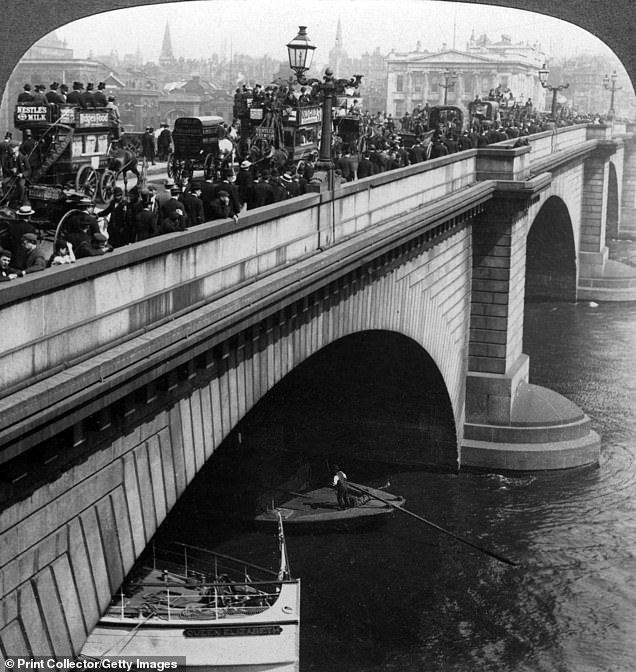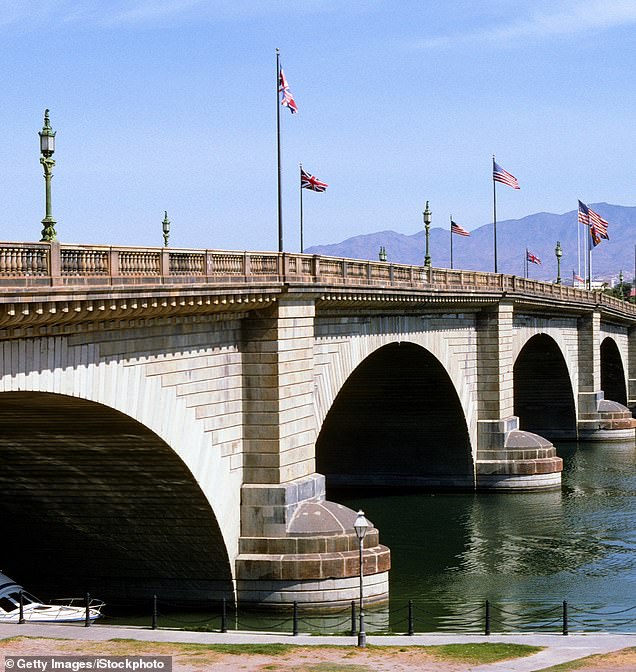Tourists are just realizing that London Bridge does not actually cross the Thames River in England, but is located in the Arizona desert.
The iconic bridge’s strange relocation to Lake Havasu City, Arizona, dates back more than half a century, to 1968, when eccentric millionaire Robert McCulloch purchased it for the incredible sum of $2.46 million, the equivalent of about $19 million. of current dollars.
It is now one of the most famous monuments in the state. In 2018 alone, it attracted a staggering 3.8 million visitors, second only to the Grand Canyon.
Tourists are just realizing that London Bridge isn’t actually in London: it’s been in the Arizona desert for more than 50 years.
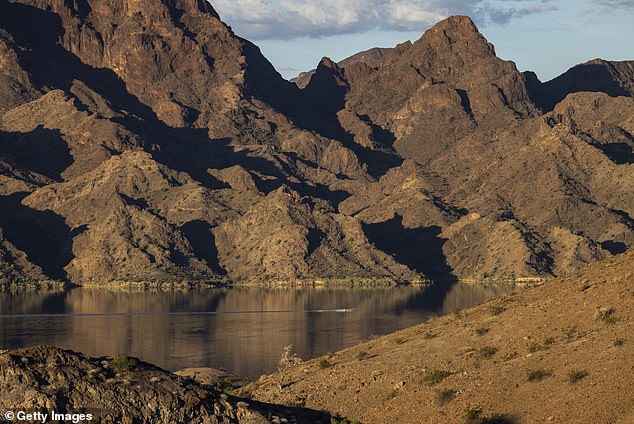
Against the austere backdrop of Lake Havasu, the relocated London Bridge has stood out since its reopening in 1971.
London Bridge built in 1831 was put up for sale in 1967 because it was too narrow to accommodate increasingly wider modern cars, buses and trucks.
It had also sunk about an inch every four years. Its concrete replacement, which still stands, opened in 1973.
The idea of selling the monument to an American came from former journalist Ivan Luckin, who was then working for the body responsible for London bridges.
There was also a precedent for such a company.
Newspaper magnate William Randolph Hearst had purchased several old European buildings and had them shipped to his enormous estate in San Simeon, California.
Luckin had a sales brochure printed and then went looking for a buyer.
In chainsaw magnate McCulloch, who was halfway through building a new city next to Lake Havasu and looking to transform his newly acquired slice of the Arizona desert into a booming tourist destination.
He decided that the 140-year-old London Bridge would be the perfect structure to attract people and traffic to the island he had created by redirecting the Colorado River.
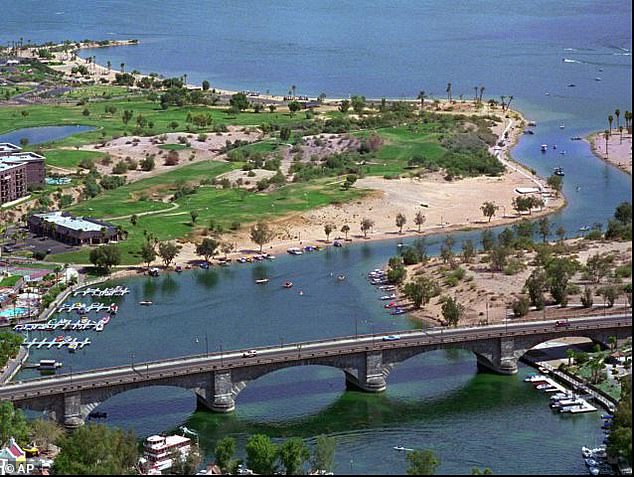
The iconic bridge, which once spanned the Thames River, now spans a mile-long canal in Lake Havasu City, Arizona.
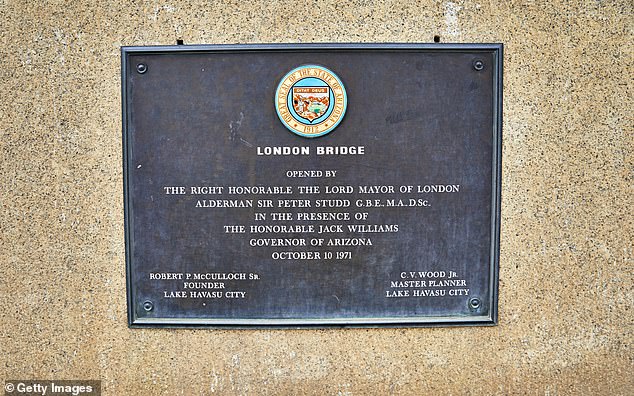
Pictured: London Bridge commemorative plaque on the wall of London Bridge in Lake Havasu.
In 1968, the businessman paid around $2.4 million for the bridge stones, which weighed more than 30,000 tons.
The bridge’s original ornate lampposts, which had been made from cast cannons captured after the British victory over Napoleon at the Battle of Waterloo, were also purchased.
It took almost three years to dismantle and rebuild the bridge.
Each stone that was shipped had to be numbered so that it could be accurately reconstructed once in the US.
The stones were placed on a cargo ship that sailed through the Panama Canal to Long Beach, California. They were then trucked to Lake Havasu City.
The foundation stone of the bridge in its new destination was laid by Sir Gilbert Inglefield, Mayor of London, in September 1968.
Surprisingly, the bridge was built on dry land, before sand was dug from underneath to create a mile-long channel that was filled with water.
The project was supervised by British engineer Robert Beresford.
As detailed in the 2013 book ‘London Bridge in America’ by Travis Elborough, some of the stones were still marked by shrapnel damage from World War II or etched with ancient graffiti.
After building a new substructure, the original stones were gradually incorporated.
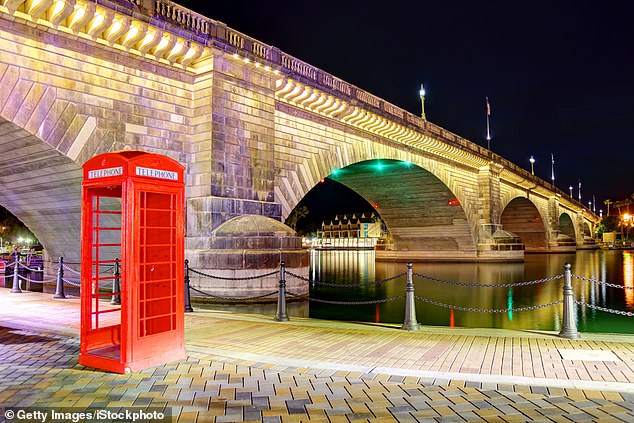
The bridge is now the second most popular tourist attraction in Arizona, surpassed only by the Grand Canyon.
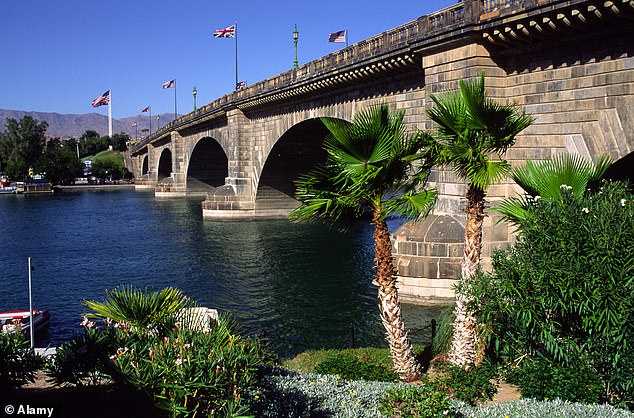
In 2021, the bridge celebrated its 50th anniversary in Lake Havasu City.
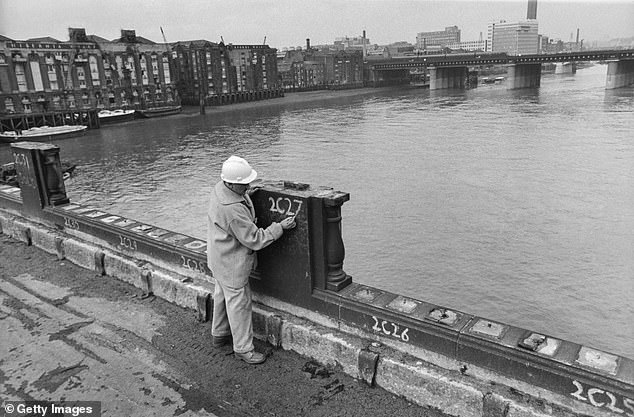
The bridge’s relocation dates back to 1968, when eccentric millionaire Robert McCulloch purchased the bridge for a whopping $2,460,000 (over $19 million in today’s money).
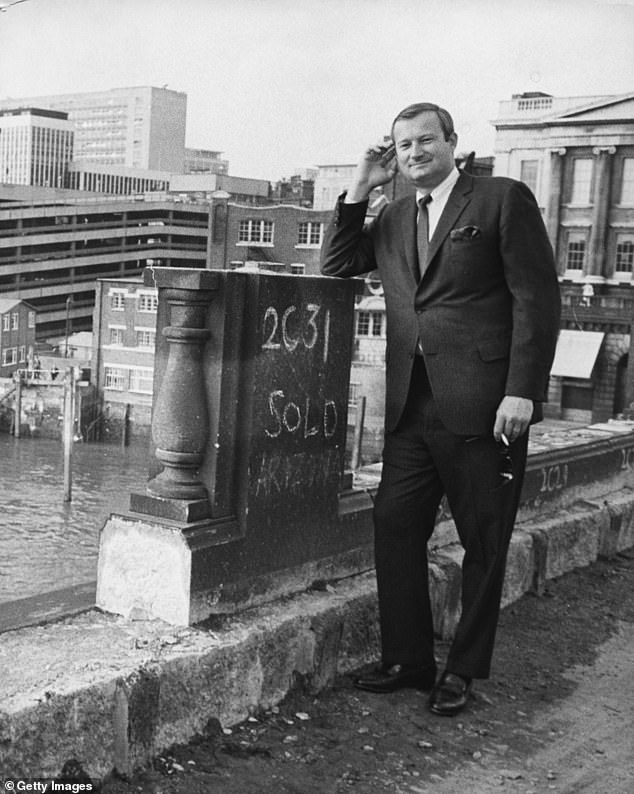
American businessman Robert P McCaulloch, standing on London Bridge as it is dismantled, ready to be transported back to the United States, London, 18 April 1968.
Despite some mistakes where stones were placed upside down or in the wrong order, the finished bridge was the spitting image of the original version in Britain.
Once the bridge was completed, dynamite was used to fill the new canal underneath with water from Lake Havasu.
In contrast to the dirty water of the Thames, a strip of light blue now ran beneath the bridge.
On a sweltering day in October 1971, with temperatures exceeding 105 degrees, the then mayor of London, Sir Peter Stud, was present at the bridge’s opening.
To mark the occasion, a grand parade filled with costumed revelers was held.
Among them were a couple of Marian maids, Puritans, cowboys, and some Dickensian chimney sweeps.
A recording of the chimes of Big Ben was used to kick off the festivities, which included a gala dinner complete with chandeliers and suits of armor.
The next day, visitors to Britain enjoyed a parachute display and a ride on a miniature steamship, before renditions of ‘God Save the Queen’ and ‘Star Spangled Banner’ were played.
In a speech, the mayor hoped the bridge would serve as a “lasting monument” to the “ties of friendship and mutual goodwill…between the American and British people.”
The mayor then helped launch a hot air balloon into the sky. As the balloon rose into the air, it tore off a piece of cloth covering a commemorative plaque.
Then there was “a cross between a Fourth of July parade and an episode of the game show It’s a Knockout” until sunset, Elborough described in his book.
There were Chemehuevi Native Americans in battle dress and Boy Scouts holding flags from each of the 50 states of the United States.
There were also cyclists riding pennies and men dressed as Yeomen of the Guard.
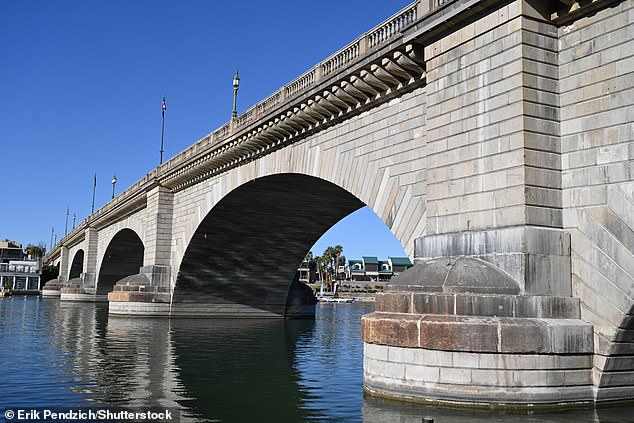
Despite some mistakes where stones were placed upside down or in the wrong order, the finished bridge was the spitting image of the original version in Britain.
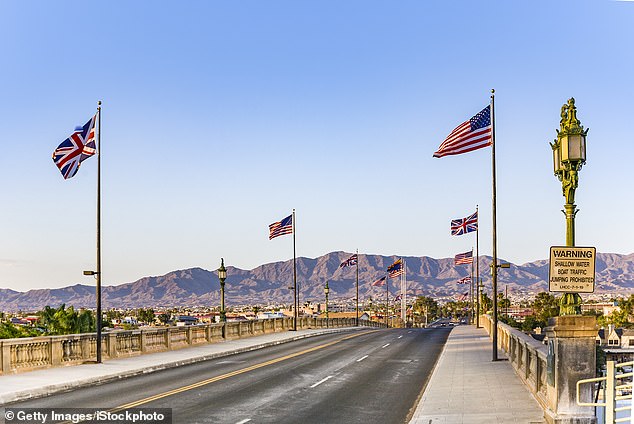
In the photo: The flags of the United States and Great Britain fly over the bridge today.
What might have seemed like a McCulloch trick worked.
Three years after the bridge reopened, Lake Havasu welcomed three million visitors a year, many of whom were drawn to the enormous pieces of English history at its heart.
Today, the bridge remains a central part of Lake Havasu City and serves its purpose admirably.
Every year events and festivals are held on and around the bridge, while several hundred bats live in its corners.
Some wonder if an undertaking of such magnitude could even be carried out today.
“From a logistics, engineering and construction standpoint, it’s very possible this could happen today and in less time than it did back then,” Jason Castelucci, director of strategic services for Go Lake Havasu, told Stgeorgeutah.
‘But the market for deconstructed historical monuments – if it exists today – is not the place where most investors look for a good investment. So yes, it could happen today, but it would take visionaries like McCullough and Wood to make it happen.”
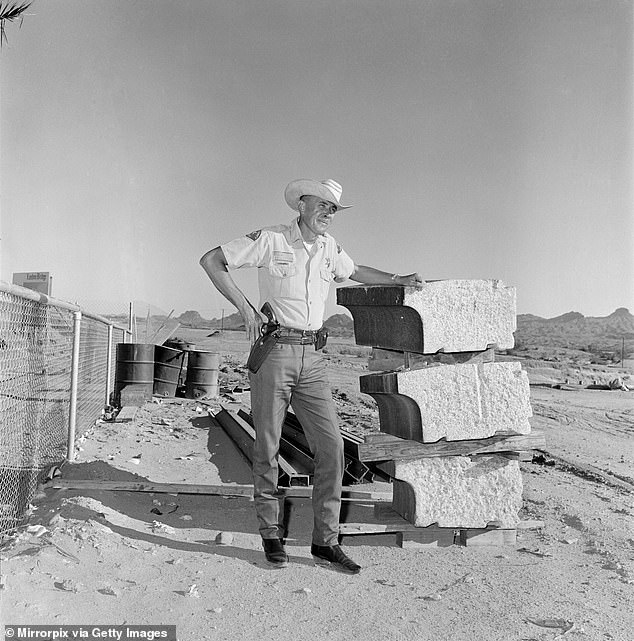
Pictured: The new location of London Bridge, Lake Havasu in Arizona, in 1970
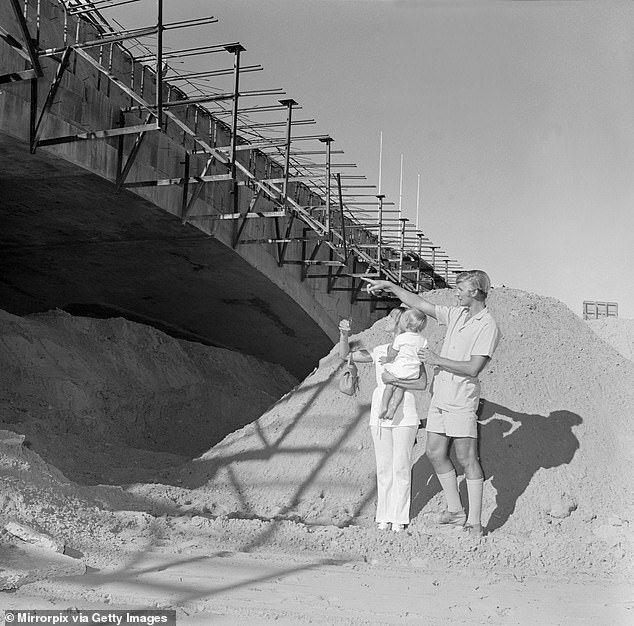
Once the bridge was completed, dynamite was used to fill the new canal underneath with water from Lake Havasu.
From a population of only a few hundred in the early 1960s, Lake Havasu City has flourished into a thriving community of more than 57,000 residents today.
While the Federal Highway Administration has since deemed the bridge “functionally obsolete,” the icon remains a major draw for locals and visitors alike.

